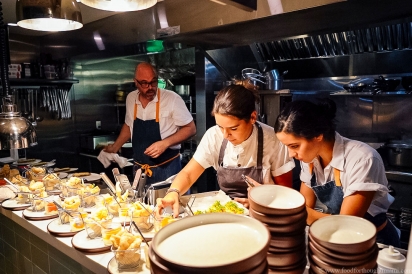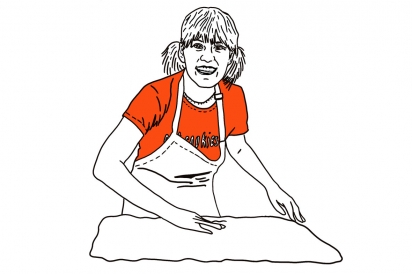On Point
Cobaya Dining Club
10 YEARS AGO …
Three food bloggers – David Rosendorf (Food for Thought Miami, Steven Scharf (Chowfather) and Steve Berry (Blind Mind) hosted their first Cobaya underground dinner. Their request of chefs: “Cook me what you want to make.” Sixteen people showed up at Talula in Miami Beach for that first meal, which included tripe risotto and a panna cotta with strawberries. They hosted experiment #81 in late December with chefs Santiago Gomez and Carlos Garcia. Rosendorf and Berry looked back on a decade of dining. Read about all their dinners at cobayamiami.com.
How have Cobaya events reflected a maturing South Florida restaurant scene?
David: I think we’re really doing the same thing as when we started — giving creative chefs the opportunity to do their thing for an audience of open-minded diners. Being able to do that for ten years and still keep it fresh, though, shows that South Florida has a good number of creative chefs, and a good number of open-minded diners. What that tells me is that maybe there isn’t as big a divide as we tend to think between what chefs want to make and what customers want to eat, and that one of the big challenges is finding the spot in the Venn diagram where those circles overlap.
Steve: Your last point says more about the evolution of Miami dining and diners, I think. What has changed in a major way is the awareness of our dinners and size of our mailing list. Though we’ve done zero advertising and, for the most part, keep dinners “underground,” we receive hundreds of seat requests for each event that can accommodate 30-40 diners typically. It’s led to us developing our own lottery-based system complete with stat tracking to try our best to keep everything as fair and balanced as possible.
Cobaya connected Steve Santana to chef Jeremiah Bullfrog, which years later led to his taqueria Taquiza. Which other benefits to South Florida’s dining scene you can claim?
David: I’d like to think that our dinner at Azul, which Andrew Zimmern shot for Bizarre Foods back in 2011, played some role in the advancement of Brad Kilgore’s career. He was maybe the third or fourth guy down the totem pole in the kitchen there, but it was clear even then that he was a real talent, as Zimmern recognized too. If you look at the dinner Timon Balloo did with us back in 2014, you’ll see some Trini dishes that look a lot like the very personal, almost autobiographical menu he’s crafted at his new place, Balloo, which to me is one of the most exciting new openings of the year. But more generally, I think every time we’ve done one of these events, we’ve made connections between chefs and diners that pay dividends for both sides. It’s always curious to me, even with the very food-centric audience that we have, how often someone says “I’ve never been to this place before.”
Steve: It’s awesome that we can bring awareness to the chefs/restaurants and give diners a potential new spot in their rotation. The diners interacting with one another all night and forming fast friendships over a meal is also pretty rad.
Food Artisans
We can pickle that! South Florida’s food artisan community is a friendly, growing bunch, making ice cream, kombucha, sausages, chocolates, sweets, vegan foods and more. Zak the Baker introduced rustic sourdough to customers at the Pinecrest farmers market and, soon, South Florida, inspiring a host of artisanal bakers. Some have opened their own brick-and-mortars, like Cindy Kruse of Cindy Lou’s Cookies (above) and Naomi Harris of Madruga Bakery.
Locavores
Year-round farm-to-table cuisine has always been a challenge for South Florida chefs because of the growing season. Niven Patel of Ghee and Erba has managed to grow a majority of what he uses in his restaurants on his own farm. But for other chefs, it’s difficult getting fresh produce from the fields in Homestead/Redland in their kitchens. Some chefs say they try to source locally when they can. Taste of Redland launched in 2018, delivering freshly harvested local produce via the USPS to consumers and restaurants. As part of their mission to promote the Redland agricultural district and encourage the locavore movement, they host al fresco all-local brunches and Sunday markets at their site during the winter growing season.






